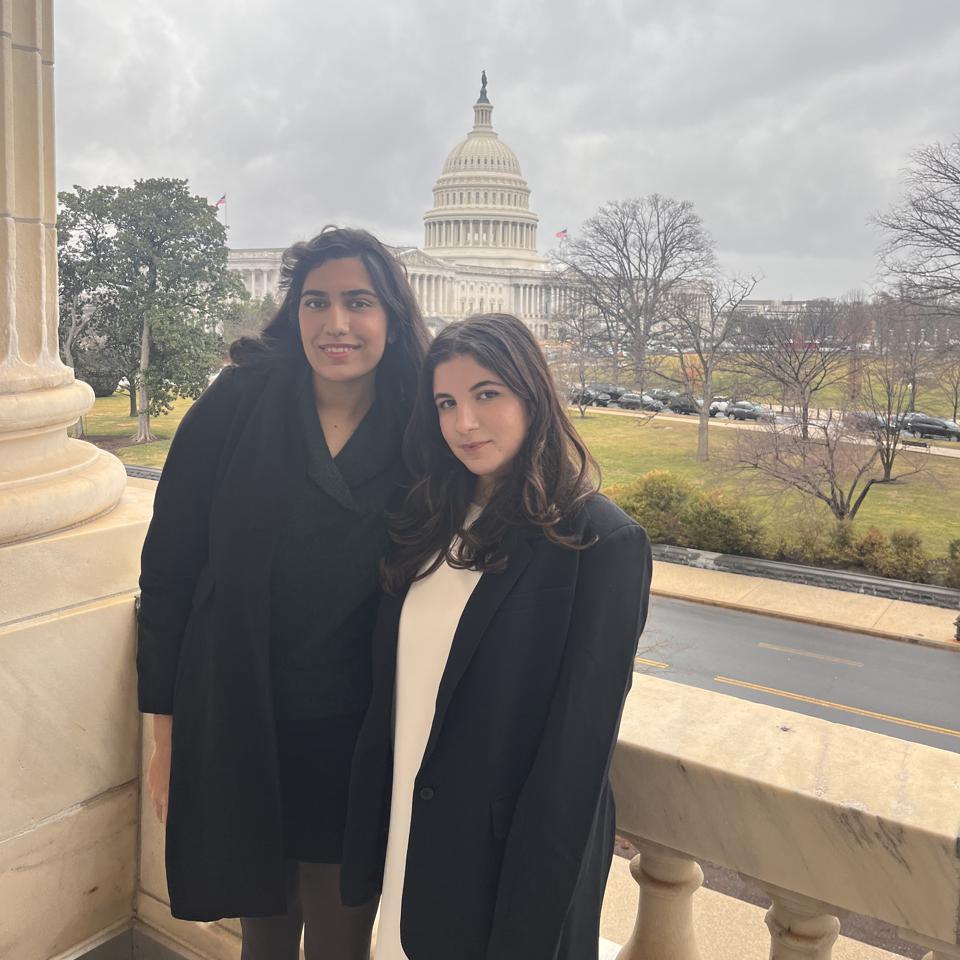“Every explicit photo of a child is a photo of a tortured child,” explains UC Berkeley student Saanvi Arora when describing online sexual abuse of minors. Arora teamed up with high school student Anastasia (Ani) Chaglasian after Chaglasian received no justice following repeated exploitation via online chat website Omegle. Together they launched Protect Kids, Not Abusers to rewrite U.S. federal and California state laws. Their demands are clear: lawmakers must protect millions of children sexually abused online over abusers and the platforms that enable abuse.
“As a child I was sexually exploited daily. After three years of abuse, I realized I would forever be haunted when I was notified that my abuser had distributed child sexual abuse material of me,” said Chaglasian. “My abuser faced no repercussions for his extensive online grooming, torture and exploitation of young children. I will now forever have to deal with the permanent virtual footprint he has left in the wake of his actions.”
The volume of child sexual abuse material (CSAM) continues to grow while federal and state laws lag. MIT Technology Review reports that the U.S. holds more CSAM than any other country. The National Center for Missing and Exploited Children reported a 35% increase in online child sexual abuse material from 2020 to 2021. Without protections and accountability from online content distribution platforms, cases of CSAM surge.
Chaglasian and Arora wrote legislation that centers survivor experiences to address CSAM. Introduced last month, California bill SB-558 would extend the statute of limitations from 10 years after the production of CSAM to when the survivor turns 40 years old, or 5 years after the survivor realizes the material has been produced, whichever date comes later. The second provision amends the definition of “distribution” of CSAM in the California Penal Code to include “public display.”
On the federal level, the Protect Kids, Not Abusers team aims to reintroduce the EARN It Act. If passed, the act would allow victims of child abuse to sue third party platforms that facilitate or ignore sexual violence on their platforms, redefine “child pornography” in U.S. Code to “child sexual abuse material” and create a commission to research standards of regulation for online platforms to prevent child pornography. It also facilitates easy reporting and removal of content from these platforms if such standards are violated.
“Predators continue to adapt and capitalize off of survivors’ inability to access justice, while policies remain lackluster and outdated,” said Arora. “It’s ridiculous that corporations can profit off of 29 million survivors’ trauma and face zero repercussions.”
Together with a team of others including a survivor as young as 14 years old, Chaglasian and Arora hope to end online child sexual abuse and make it easier for survivors to get justice through the U.S. legal system. Arora calls for “longevity through representation,” declaring that, “policymakers have long dictated responses to sexual violence without consulting those directly affected. Our goal is to change that by centering young survivors in the narrative surrounding child sexual abuse.”
Chaglasian shared that meeting other young survivors has motivated her to remain resilient. “When I started this journey it was just me on a laptop in my bed,” she said.
Together, Arora and Chaglasian believe there is great strength in sharing one’s story. “You could directly impact millions of people’s lives without even knowing them,” they said. “The first step is the hardest, but once you take it, you’ll never look back. If not you, then who?!”

